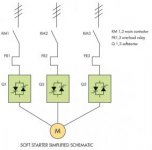Light Hammer
Aluminum
- Joined
- Aug 27, 2015
After what amounted to a month long battle with my power co, I was informed that the three phase install would cost me around $25k so...
I ordered an American Rotary AD-30 RPC. Here's my question: My lathe (Monarch 60/61 series w/15hp motor) is equipped with what appears to be the factory installed starting system. Being that it's a 15 hp motor, will I need some form of "soft start" or will the existing components work. I ask because one of the letters I received from my power co indicated that all motors above 5 hp would need to have a "starting current reduction system" which, at least to me, means some form of soft starter.
I ordered an American Rotary AD-30 RPC. Here's my question: My lathe (Monarch 60/61 series w/15hp motor) is equipped with what appears to be the factory installed starting system. Being that it's a 15 hp motor, will I need some form of "soft start" or will the existing components work. I ask because one of the letters I received from my power co indicated that all motors above 5 hp would need to have a "starting current reduction system" which, at least to me, means some form of soft starter.



